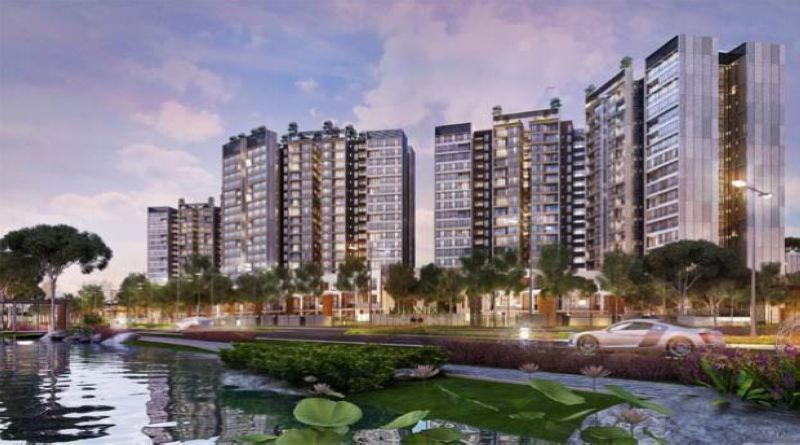Bandar Malaysia – a guessing game
PETALING JAYA: There was confusion when it came to the play of stocks tied to Bandar Malaysia in yesterday afternoon’s trading session.
And the biggest losers would have been investors chasing up property counters associated with Bandar Malaysia, especially Iskandar Waterfront City Bhd (IWC).
It came as news filtered down that China Railway Engineering Corp (CREC) was teaming up with Hong Kong’s rail operator – MTR Corp – to bid for the multi-billion-ringgit high-speed rail (HSR) project between Kuala Lumpur and Singapore.
A day after it hit limit up, shares of IWC, which hit a day’s high of RM2.45, came crashing down at about 3:20pm. The selling was furious, and the stock ended the day 15 sen lower at RM1.98. It was also the most actively traded counter of the day, with 272.02 million shares changing hands.
The IWC roller-coaster ride attracted a query from Bursa Malaysia. The company, in its reply, said it was unaware of any new development that had contributed to the stock’s unusual market activity.
What was more surprising was that within minutes of IWC crashing, stocks related to businessman Tan Sri Desmond Lim started to soar. Shares of Malton Bhd looked poised to hit limit up, touching a high of RM1.94 or a gain of 25.16%, before closing the day 24 sen higher at RM1.78. It was the fifth most actively-traded counter of the day, with 72.16 million shares traded.
Meanwhile, WCT Holdings Bhd closed up three sen to RM2.32 on a volume of 17.4 million shares. The warrants of Malton and WCT also garnered significant trading interest.
On Monday, Malton and WCT shares and warrants had come under pressure.
“It is not a game for retailers. Most probably, stockists are trading, which is why the volume is high,” said a dealer.
It is very much a guessing game as to who is playing what role in Bandar Malaysia since the Ministry of Finance Inc (MoF) terminated its agreement with Iskandar Waterfront Holdings Sdn Bhd (IWH)-CREC to be the master developer of Bandar Malaysia on May 3.
However, it is certain that while the MoF is inviting expressions of interest for the role of master developer of Bandar Malaysia, it will now be retaining 100% ownership of the site.
“The MoF has stated clearly that it would hold full ownership of the land. The master developer would probably be tasked to come up with an iconic building for development. It is similar to how the Tun Razak Exchange is being developed,” said a source close to the deal.
Thus, IWH’s Tan Sri Lim Kang Hoo may still stand a chance to be a master developer again. However, it is unlikely to be the same arrangement as structured before May 3. IWH, together with CREC, was master developer of Bandar Malaysia owning 60% of the consortium, with the MoF owning the rest.
According to a report in the South China Morning Post (SCMP), CREC was teaming up with MTR Corp to put in a bid for the Kuala Lumpur-Singapore HSR project.
Its chairman Frederick Ma Si-hang was quoted by SCMP yesterday as saying that it planned to collaborate with CREC to bid for the project.
CREC is the national rail operator of China. MTR Corp and CREC had signed a memorandum of understanding for cooperation in the “One Belt, One Road” initiative last December.
In a related development, Minister in the Prime Minister’s Department Datuk Seri Abdul Rahman Dahlan said the IWH-CREC consortium would be allowed to bid for Bandar Malaysia again as long as the offer is right. He said that the company could still participate in the project, but that the Government wanted “a better deal” as Bandar Malaysia’s value has increased.
The other players that appear to be in the running are Malton, WCT and Malaysian Resources Corp Bhd.
When the IWH-CREC consortium signed the deal as master developer of Bandar Malaysia in December 2015, it was to pay RM7.41bil for its 60% stake. Thus, the deal valued the 486 acres of Bandar Malaysia land at RM12.35bil, or roughly RM600 per sq ft.
Since then, the value of Bandar Malaysia has significantly increased.
It will house the Kuala Lumpur-Singapore HSR terminus and become a central transport hub with connections to the mass rapid transit lines, KTM Komuter, Express Rail Link and 12 other highways. The Digital Free Trade Zone (DFTZ) will also be housed in Bandar Malaysia. It has two key aspects – Alibaba’s regional logistics hub in the KL International Airport and the Kuala Lumpur Internet City or KLIC. DFTZ is set to become the Silicon Valley of South-East Asia.









